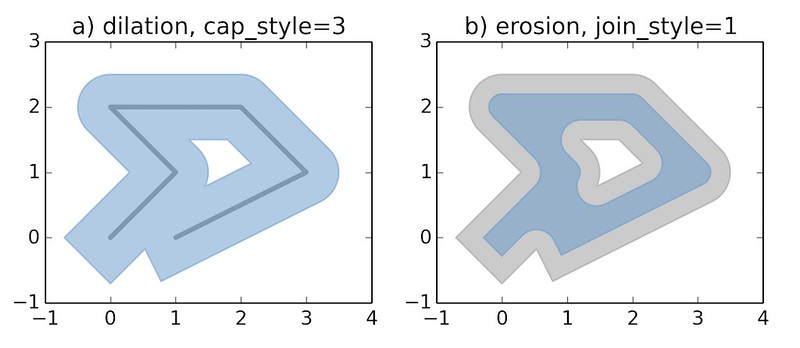180122 特徵值與特徵向量的幾何解釋與python程式碼,附matplotlib繪製多邊形
阿新 • • 發佈:2019-01-08

- 紅色 基座標(豎著看)
1 0
0 1 綠色 變換矩陣(豎著看)
3 1
0 2藍色 特徵向量(豎著看)
1−2√2
02√2 黑色 變換矩陣(左乘)特徵向量(豎著看)
3−2√
02√
特徵向量與特徵值得幾何含義:
特徵向量:原始向量在進行線性旋轉變換(左乘矩陣)後仍留在其所張成的空間的向量。
特徵值:即特徵向量進行線性變換後,留在原空間中變換的比例。
# -*- coding: utf-8 -*-
"""
Created on Wed Mar 11 18:51:08 2015
@author: Duncan
A simplified version of linearring.py, one of the shapely examples
""" 
